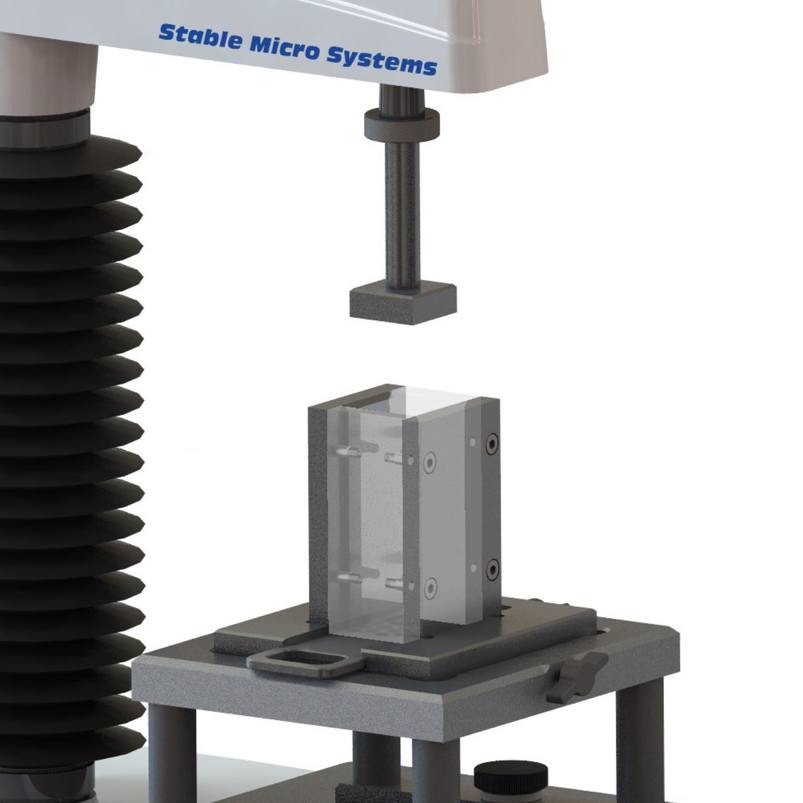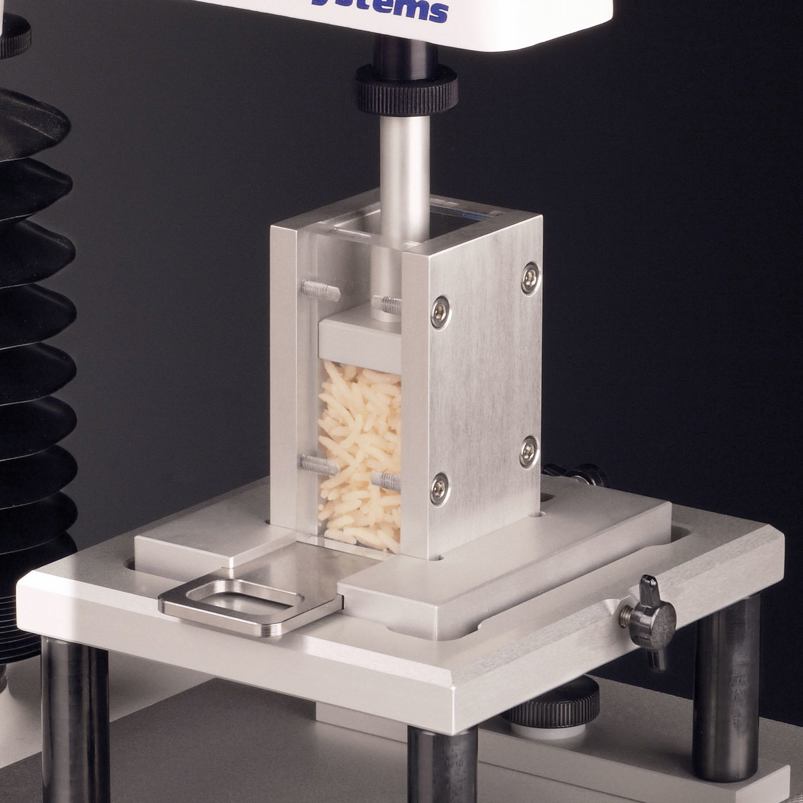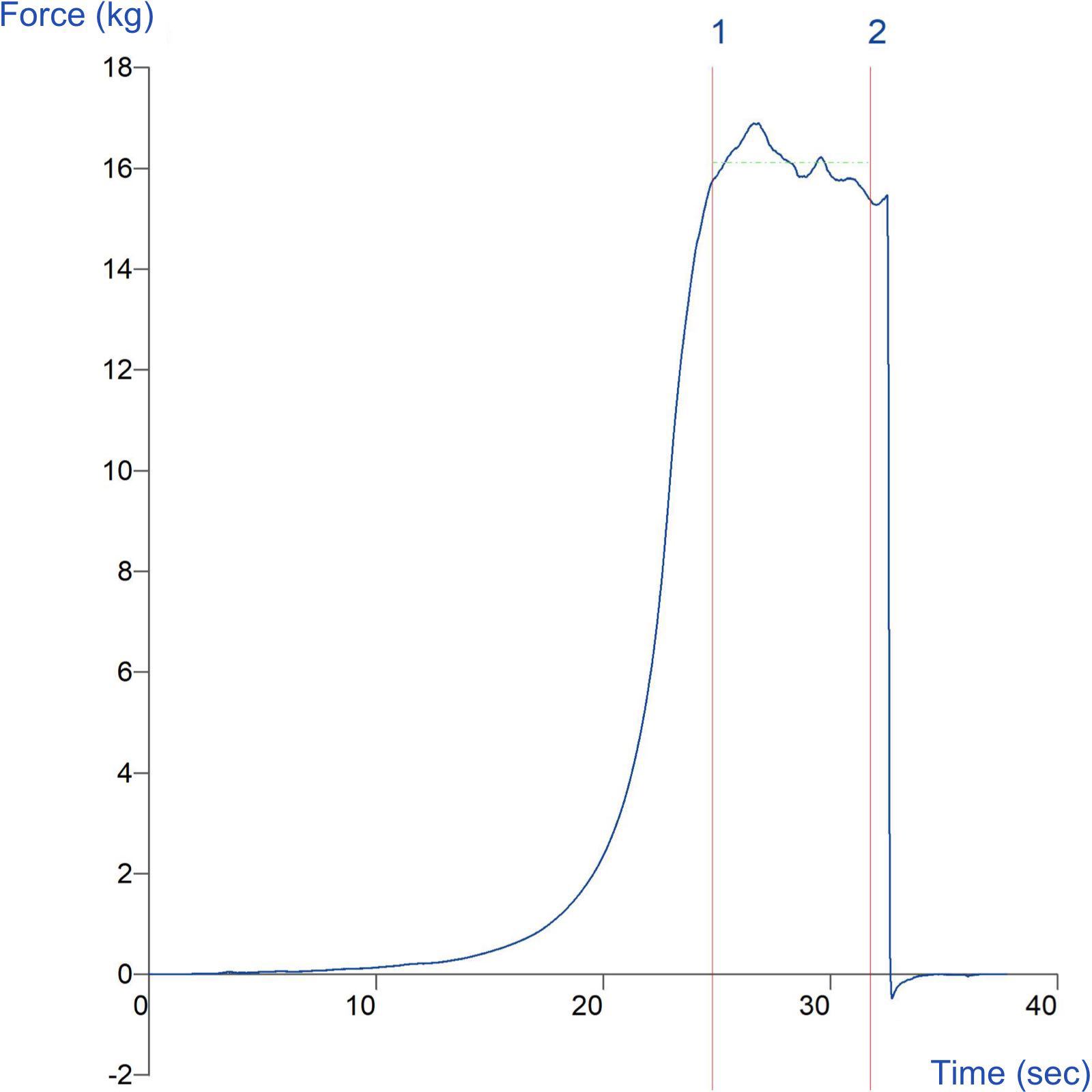Product overview
This rig allows the determination of rice kernel resistance to extrusion after cooking according to ISO 11747. This standard is the outcome of interlaboratory testing organised in 2010 by UNI involving nine international laboratories and was prepared by the ISO/TC34 Technical Committee for Cereals and Pulses.
The sample is tested after cooking (parboiled or not parboiled) under specified conditions. A small sample is placed in the testing cell of the rig. The rice is pushed down by a plunger of similar cross-section to the cell therefore forcing the rice to be compressed before extruding through the holes in the base extrusion plate on which the sample is located.
Resistance to extrusion is measured as the ease of pushing cooked rice through this perforated plate using compression and shear. The mean force required to extrude the sample over the plateau region of its curve is divided by the testing area of the extrusion plate and is recorded in kg/cm².
How does the Rice Extrusion Rig work?
Ideal sample form
Cooked rice.
Benefits and limitations
- Standard approved method
Optional extras
A Product Catchment Drawer (HDP/CAT) is recommended.
Technical information
Installation
Full installation instructions are provided within the Education Zone of the latest Exponent/Connect software version and on the technical information sheet accompanying this product.
Chemical compatibility
Stable Micro Systems probes and attachments are commonly made from four materials: anodised aluminium (AA6082 T6), stainless steel (316 T), Delrin (acetyl copolymer) and Perspex (polycarbonate).
In general use, probes and attachments made from these materials will be suitable for testing food products and inert non-food materials.
The four materials listed above are not universally resistant to all types of chemicals and as such the compatibility of the probe/attachment material with the product (to be tested) must be established to prevent damage to the probes and attachments. If the compatibility of the product with the probe is unknown to the customer then the chemical information about the product (Material Safety Data Sheet or Product Data Sheet) should be submitted to Stable Micro Systems. Stable Micro Systems will then assess the suitability of the probe/attachment material for use with the product and advise accordingly. If this advice is not sought then Stable Micro Systems will not accept liability for probes/attachments damaged by chemical attack from the product being tested.
Cleaning and maintenance
All probes and attachments may be cleaned in warm (or hand hot) water using a mild detergent. A soft brush may be used but abrasive cleaning aids should be avoided. Stable Micro Systems products should not be microwaved or cleaned in a dishwasher.
Screw threads should be lightly lubricated after drying using a light lubricant, e.g. petroleum jelly, mineral oil. This will aid the fitting and unscrewing of the item. Each component of a probe or attachment should be wrapped separately when stored, to avoid scratching or chipping. This will safeguard against any unnecessary damage to the accessory.



